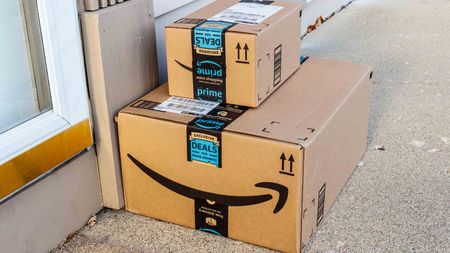Stop Wasting Water
With a few twists of the wrist, you can save water and money.

1. Go low-flow. Listen up, water wasters: With a few twists of the wrist, you can save 25% to 60% of the water it takes and 50% of the energy necessary to shower and shampoo you and your family.
How so? Install a low-flow shower head, which restricts the water output to no more than 2.5 gallons per minuteQthe federally mandated limit for new fixtures. The shower heads generally run $10 to $20 a pop (some utility companies give them away) and screw into existing fittings.
You'll squeeze the most out of the low-flow strategy if you live in a home built before 1994 and if you haven't renovated your bathroom: Older shower heads send as many as 5.5 gallons per minute down the drain. The new fixtures go as low as 1.5 gpm, saving 7,300 gallons and $30 to $100 a year over their 2.5-gpm counterparts.

Sign up for Kiplinger’s Free E-Newsletters
Profit and prosper with the best of expert advice on investing, taxes, retirement, personal finance and more - straight to your e-mail.
Profit and prosper with the best of expert advice - straight to your e-mail.
Unlike older versions, which put you under a sprinkle, one new low-flow maintains decent pressure by forcing air into the mix, and another channels water into massage-like streams. A third type, the H2Okinetic Technology shower head, by Delta, shoots bigger droplets at a higher speed than the other two, approaching the feel of an old-fashioned soaker at a parsimonious 1.6 gpm. The fixture runs about $55 at retail stores.
If you haven't a clue how fast the water runs through your shower head, put a bucket under the nozzle and time how many seconds the water takes to get to the 1-gallon mark. If it's less than 20 seconds, head for the hardware store.
2. Retrofit your faucets. As you browse the plumbing aisles, check out faucet aerators -- doohickeys that screw into your faucet threading and cut the water flow from 3 to 4 gallons per minute (the rate on older fixtures) to as little as a half-gallon. As with shower heads, you can figure out how fast your faucet flows by putting a quart container under the stream. If the container fills in less than five seconds, your faucet could use this fix.
As their name suggests, aerators blend water and air, reducing the flow without sacrificing pressure. At 50 cents to $3 apiece, the devices are some of the cheapest green gadgets available. Your utility company may even offer you a rebate or hand them out free.
Aerators come in a range of flow rates, up to 2.2 gpm. A faucet that flows at 1 gpm gets your toothbrush and washcloth plenty wet. But unless you want to grow old waiting for your pasta pot to fill, you'll need to give your kitchen faucet a bit more oomph. Use an aerator with a flow rate of at least 2 gpm.
3. Have a little WaterSense. Soon, you won't have to worry about bringing home products that promise a deluge and deliver a dribble or that don't live up to their water-saving claims. The U.S. Environmental Protection Agency recently launched a certification program that vets devices for water efficiency and performance, and awards the WaterSense label to those that do the job right. You can already find the label on high-efficiency toilets; bathroom faucets and aerators are next in line. The WaterSense program also certifies landscapers who have been trained to use water wisely. To find a landscaper in your area, go to www.epa.gov/watersense.
4. Go with a trickle. For kitchen chores that demand an open spigot, go with a trickle, not a torrent. Restrict the water flow to the width of a drinking straw and save up to a gallon of water per minute.
5. Stop the flow. Turn the water off while you brush your teeth. Running the water for two minutes -- you are brushing for two minutes, right? -- sends 2 gallons of water down the drain.
6. Forget to flush once in a while and save up to 4.5 gallons per memory lapse.
7. Use the right setting. The permanent-press setting on your washing machine uses 5 gallons more per load than the regular setting. Reserve it for clothes that need line-drying.
8. Shower. Switch from a bath, which requires 30 to 70 gallons, to a shower, which uses 25 gallons in ten minutes under a 2.5-gpm shower head. Then shower shorter. Can't do it? Jennifer Aniston takes three minutes to get the job done, according to The Green Book (Three Rivers Press, $13), and you don't hear her complaining.
9. Plug the leaks. A leaky faucet wastes as much as 2,700 gallons in a year -- if it doesn't drive you crazy first. So fix it already.
10. Fill 'er up. Run the dishwasher and the clothes washer with full loads.
11. Raise the mower blades. Adjust your lawn mower to the 3-inch setting. Shaggy grass holds moisture longer, requiring less watering.
12. Test the toilet. Put a drop of food coloring in the toilet tank. If the color shows up in the bowl, your tank is leaking and you're wasting up to 200 gallons of water a day.
13. Turn off the water while you shave and soap up. If you shave in the shower, outfit the wall with the nifty Shower Mirror, complete with clock, razor holder and light, from Frontgate ($60 at www.frontgate.com).
14. Water early. Water your outdoor plants in the early morning, before the sun can burn off moisture.
15. Don't over-water. Before starting your sprinkler, step on the grass. If the blades spring back, hold off on watering for a day or two. The average lawn needs only one hour of watering a week.
16. Get your car washed. Take your car out for a shampoo and rinse. Commercial car washes save up to 100 gallons of water per wash over the do-it-yourself kind, and they often reuse the rinse water, according to The Green Book. If every American took the lazy way out just once, total savings would amount to 8.7 billion gallons of water.
Get Kiplinger Today newsletter — free
Profit and prosper with the best of Kiplinger's advice on investing, taxes, retirement, personal finance and much more. Delivered daily. Enter your email in the box and click Sign Me Up.

-
 Costco’s 4.5-Pound Tiramisu Cheesecake Might Be Your New Favorite Dessert
Costco’s 4.5-Pound Tiramisu Cheesecake Might Be Your New Favorite DessertIf you haven’t visited your local Costco bakery to check out the Kirkland Signature Tiramisu Cheesecake, you'd better get there early, they are flying off the shelves.
By Kathryn Pomroy Published
-
 TaxAct Review: Pricing, Features and What to Expect
TaxAct Review: Pricing, Features and What to ExpectTaxAct offers basic tax prep tools with competitive pricing. Understand its features, limitations and how it compares to similar software.
By Carla Ayers Published
-
 Roth IRA Contribution Limits for 2025
Roth IRA Contribution Limits for 2025Roth IRAs Roth IRA contribution limits have gone up. Here's what you need to know.
By Jackie Stewart Last updated
-
 How to Find Foreclosed Homes: Best Foreclosure Listings Sites
How to Find Foreclosed Homes: Best Foreclosure Listings SitesMaking Your Money Last Find foreclosed homes for sale on these foreclosure listing websites. Search for properties on these free, paid or government sites.
By Bob Niedt Last updated
-
 Luxury Home Prices Rise as the Rich Dodge High Mortgage Rates
Luxury Home Prices Rise as the Rich Dodge High Mortgage RatesLuxury home prices rose 9% to the highest third-quarter level on record, Redfin reports, growing nearly three times faster than non-luxury prices.
By Kathryn Pomroy Published
-
 Four Tips for Renting Out Your Home on Airbnb
Four Tips for Renting Out Your Home on Airbnbreal estate Here's what you should know before listing your home on Airbnb.
By Miriam Cross Published
-
 Five Ways to a Cheap Last-Minute Vacation
Five Ways to a Cheap Last-Minute VacationTravel It is possible to pull off a cheap last-minute vacation. Here are some tips to make it happen.
By Vaishali Varu Last updated
-
 How to Figure Out How Much Life Insurance You Need
How to Figure Out How Much Life Insurance You Needinsurance Instead of relying on rules of thumb, you’re better off taking a systematic approach to figuring your life insurance needs.
By Kimberly Lankford Last updated
-
 Amazon Big Deal Days Is Coming! We’ve Got All the Details
Amazon Big Deal Days Is Coming! We’ve Got All the DetailsAmazon Prime To kick off the holiday season with a bang, Amazon Big Deal Days runs Tuesday, October 8 and Wednesday, October 9.
By Bob Niedt Last updated
-
 How to Shop for Life Insurance in 3 Easy Steps
How to Shop for Life Insurance in 3 Easy Stepsinsurance Shopping for life insurance? You may be able to estimate how much you need online, but that's just the start of your search.
By Kaitlin Pitsker Last updated